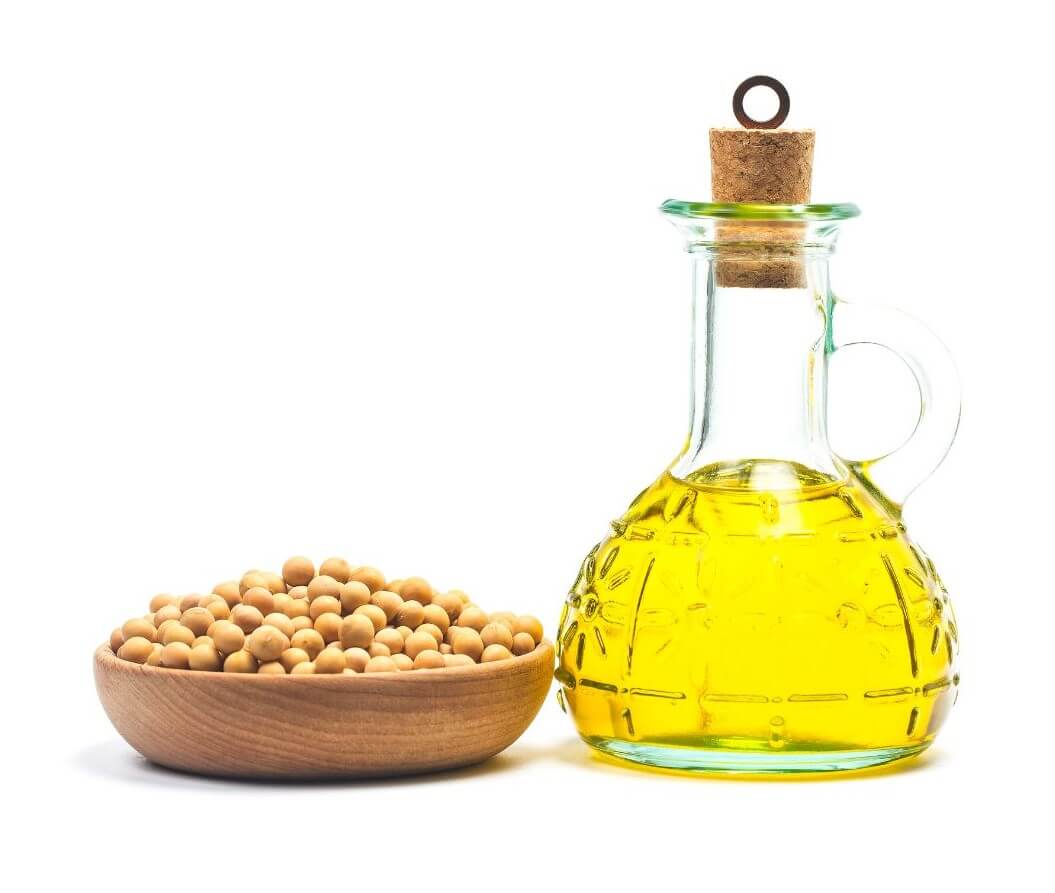Warning: These 5 Anti-Nutrients Can Disrupt Your Hormones
Women’s hormones are so incredibly fine-tuned, sometimes even the smallest disruption can cause a domino effect of severe hormonal imbalance. And with individualized, holistic medicine, sometimes one person’s superfood is another’s strict toxin.
Anti-nutrients are a perfect example—they can hide in otherwise healthy foods and act as bothersome hormone disruptors for some people. But not everyone is sensitive to anti-nutrients, so it’s important to be aware when you’re working on honing in on the root causes of your hormonal imbalance symptoms.
What are these anti-nutrients and where do they come from? How would you know if you had problems? Let’s explore how these anti-nutrients can affect women’s hormones and lead to potential health issues if they slip under your radar undetected.
Do you need a clear roadmap toward balanced hormones? Make it easy right from the beginning with a step-by-step, 12-week program.
Your hormones regulate how you feel, think, and look every day
Symptoms of hormone imbalance include common complaints like PMS, cramps, mood swings, trouble sleeping, bloating, irritability, and weight gain. If you’re feeling any of these, there’s a good chance your problems are rooted in a hormone imbalance.
If you’re nearing perimenopause (or menopause) it’s even more crucial that you prioritize hormone-balancing foods. This will help you handle hormone shift with greater ease & much less discomfort.
How do anti-nutrients affect hormones?
Anti-nutrients, found mainly in some plant foods and grains, can interfere with hormonal health. They’re natural or synthetic compounds that can block the absorption of essential vitamins and minerals like zinc, magnesium, iron, calcium, and other trace elements (1).
Certain foods help to support optimal hormone function, while others can disrupt it. In our modern diet, we’re bombarded with refined sugar, processed carbohydrates, and chemical-laden snack foods that are a major roadblock to healthy hormone balance.
Do you know your hormone levels? Get a simple, at-home saliva test that delivers a personalized wellness routine that includes skincare and supplement recommendations tailored to your hormones. You’ll also receive diet and lifestyle advice – to rebalance and see results from the inside out.

5 Anti-nutrients that contribute to hormone imbalance
The five anti-nutrients we want to pay attention to are: phytic acid, goitrogens, oxalates, omega-6s, and gluten. Here is a look at each of them and how they can disrupt your hormones if left unchecked.
Phytic acid or phytates
Phytic acid is found in the hulls of seeds, grains, and legumes. It acts like a chelator, robbing your body of important minerals like zinc & iron (2). Phytic acid can also reduce the levels of beneficial enzymes and interfere with absorption of omega-3 fatty acids. This makes some foods harder to digest and abrasive to the gut.
If you’re consuming a lot of phytate-rich foods, you’re likely headed toward mineral deficiencies—even if you’re eating a balanced diet.
Sprouting grains, beans, and seeds can reduce the phytic acid content of many of these foods.

Gluten
Found in wheat, barley, and rye, gluten has a strong link with autoimmune thyroid disease (AITD) (3,4). Gluten is also notorious for causing gut issues, contributing to a leaky gut and inflammation throughout the body (5). This inflammation can interfere with healthy hormone function and increases the likelihood of nonspecific but problematic symptoms like mood changes or fatigue (6).
Non-celiac gluten sensitivity is real, so even if you don’t have Celiac disease, going gluten free may be beneficial.
Related: PCOS & Leaky Gut | The Gut-Hormone Connection
Oxalates
Oxalates are compounds found in certain plant-based foods and form crystals with calcium in our bodies that can irritate mucosal linings in the body, including the gut lining. High levels of oxalates have been linked to oxidative stress and kidney stones (7,8).
There are some otherwise healthy foods that contain high levels of oxalates like spinach, chard, rhubarb, almonds, pecans and blackberries. Raw kale and spinach are two of the highest oxalate foods. So while leafy greens are a good part of a healthy diet, if you’re prone to kidney stones you’ll want to watch your intake.
You can reduce the oxalate content of foods like spinach and kale by blanching, boiling, or steaming them, then discarding the liquid. Eating calcium foods, like milk or yogurt, can also help balance out the oxalate content in your diet.
Try these: 9 Anti-Inflammatory Recipes Worth Trying
Goitrogens
Goitrogens can cause your thyroid to become sluggish, as they interfere with the absorption of iodine—an important mineral for our thyroid health (9). Any change in thyroid function can then cause (or worsen) other hormonal imbalances, as it plays a major role in overall health. Iodine deficiency has re-emerged as a potential health concern—for women in their reproductive years especially—as the foods we eat are grown in soil low in essential nutrients (10).
Goitrogens are found in cruciferous vegetables like broccoli, cabbage, and kale. But there’s no need to avoid these foods altogether—simply cooking them removes the goitrogenic activity. It only becomes problematic when you eat them raw or in large quantities.
Related: Eat More of This Underrated Food for Balanced Hormones
Omega-6s
Omega-6s aren’t an anti-nutrient by themselves, but they can have a negative impact on hormonal balance under the right circumstances. A diet high in omega-6 and low in omega-3 fats results higher levels of proinflammatory signals that can interfere with healthy hormone function. We need both omega-6s and omega-3s in our diet, but the ratio is important.

Ideally, we want a ratio of about 4:1 omega-6 to omega-3 (the Standard American diet is about 23:1, for reference) (11). Today, most of the omega-6 fats we eat come from seed oils like canola oil, soybean oil, or safflower oil.
Having a lot of omega-6 fats can overpower the anti-inflammatory properties of omega-3s and really mess with hormone health. Eating a lot of omega-6 fats and not very many omega-3 might cause symptoms like worsening cramps, migraine, mood swings, or muscle aches.
You don’t need to omit omega-6 fats from your diet, but it’s a good idea to up your intake of omega-3s. Choose cooking oils lower in omega-6s, such as olive, avocado, and coconut oil. You can also increase your intake of omega-3s to reach a healthier fatty acid ratio with more fatty fish & seafood, or a quality omega-3 supplement.
Listen: Eat for Your Inflammation Type with Maggie Berghoff
So how do you make sure anti-nutrients aren’t sabotaging your health?
The best way to make sure that anti-nutrients aren’t contributing to hormone imbalances is to become aware of what they are and how much you might be consuming. It’s also great to switch up the foods you eat, so you’re not overloading on any one food group—and by making sure you’re eating a balanced diet with plenty of fresh fruits and vegetables.
Also, one of the best things you can do to support healthy hormones is to make sure that your gut health is in balance. Keeping your gut microbiome diverse and healthy can help promote good hormone production & function.
Finally, if you feel like you’ve been doing all of the above, but still don’t seem to be able to break through your hormonal imbalance symptoms, it might be time to take a deeper look at your hormones.
A hormone test can help you find out where all your hormone levels are, so you have a clear pathway for how to fix an imbalance.
At-home hormone testing is easier than ever with the newest kit in the shop. It can help you identify any underlying issues that may be causing problems and create an individualized treatment plan for you.
Resources
- https://www.ncbi.nlm.nih.gov/pmc/articles/PMC4325021/
- https://www.ncbi.nlm.nih.gov/pmc/articles/PMC2266880/
- https://pubmed.ncbi.nlm.nih.gov/30060266/
- https://pubmed.ncbi.nlm.nih.gov/12919165/
- https://www.ncbi.nlm.nih.gov/pmc/articles/PMC7353361/
- https://www.ncbi.nlm.nih.gov/pmc/articles/PMC6313445/
- https://www.ncbi.nlm.nih.gov/pmc/articles/PMC8193726/
- https://pubmed.ncbi.nlm.nih.gov/12234515/
- https://www.ncbi.nlm.nih.gov/pmc/articles/PMC7282437/
- https://www.ncbi.nlm.nih.gov/pmc/articles/PMC6373336/
- https://openheart.bmj.com/content/5/2/e000946
